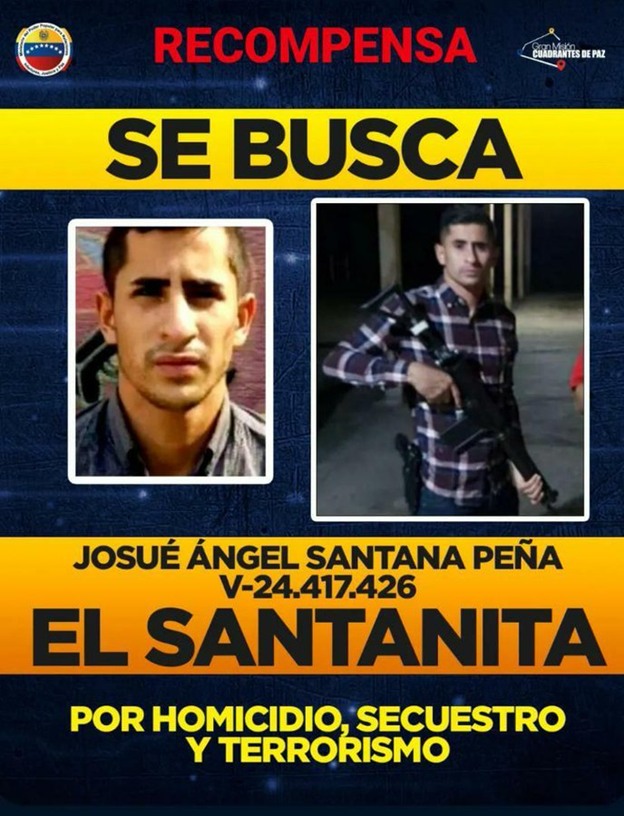The Venezuelan government claimed to have “utterly dismantled” the powerful Tren de Aragua gang after seizing one of the country’s most notorious prisons. Yet the operation smacks of political theater as the gang’s leadership escaped and its operations remain largely untouched.
Standing outside Tocorón prison in the central state of Aragua on September 21, Venezuelan Minister of Interior, Justice, and Peace Admiral Remigio Ceballos lauded the operation by 11,000 soldiers and officials, backed by armored vehicles, which took control of the jail.
SEE ALSO: Tren de Aragua Profile
“This is a great blow that has been dealt to all those criminal organizations that have been totally dismantled, totally dismantled,” Ceballos said.
Ceballos then undermined his own declaration by admitting that the operation had not secured the capture of the prison’s most infamous inmate, Hector Guerrero Flores, alias “Niño Guerrero,” the head of the Tren de Aragua who ran the prison as the “pran,” or criminal warden.

Source: Official social media for Ministry for the Interior, Justice and Peace
“He was at liberty. Full freedom,” Ceballos said. “And so, well, we presume that he is somewhere, because he wasn’t here, was he? Yes, he was here, but he was already free.”
Not only was Tocorón home to up to 3,000 inmates, it was also a safe haven for criminals on the run. One of Niño Guerrero’s top lieutenants, and one of Venezuela’s most wanted, Josué Ángel Santana, alias “El Santanita,” had apparently been living in the prison for years, beyond the reach of the police who hunted him.

Source: Official social media for Ministry for the Interior, Justice and Peace
The Tocorón action was also framed by Ceballos as a rescue operation.
“We have liberated the Venezuelan people,” he claimed. The Tren de Aragua was “violating the human rights and mistreating the prisoners, like a form of slavery.”
He glossed over the fact that the prisoners had been sent to Tocorón by the Venezuelan justice system and that the prison ministry had long ago granted Niño Guerrero dominion over the jail, allowing it to become one of the most important criminal operating bases in the country.
InSight Crime Analysis
The takeover and closure of Tocorón prison is a blow to the Tren de Aragua, which has lost its capital and main operating base, but hardly a fatal one.
With the closure of the emblematic prison, the Tren de Aragua and Niño Guerrero have lost four important benefits:
- The prison acted as a fortress for Niño Guerrero, where he could live like a king far out of reach of his rivals.
- It was a recruitment center, where the pran and the Tren de Aragua could recruit from the prison population.
- It was a logistics base, where new recruits could be trained, operations planned, weapons stashed, and cash hoarded. A veritable arsenal of ammunition was seized in the operation, including rocket launders, perhaps too heavy for the fleeing prisoners to carry with them. But few other weapons were found.
- It was an important stream of revenue, as all prisoners in Tocorón had to pay Niño Guerrero a regular fee, basically extortion, known as “la causa,” which generated millions of dollars a year, depending on the size of the prison population.
Nevertheless, it is hard to see this operation as much more than political theater, certainly in the claim that it has dismantled the Tren de Aragua. The gang is still intact, its leadership free, and its outposts spread across Latin America unaffected by the operation.
Indeed, for Humberto Prado, the director of the Venezuelan Prison Observatory (Observatorio Venezolano de Prisiones – OVP), this was not a military takeover, but rather an agreed surrender.
“When you go to take Tocorón — Tocorón, home to no more and no less than Niño Guerrero, who controls the Tren de Aragua in Venezuela, at a national and international level — and there has been no criminal resistance, we simply qualify it as a negotiated surrender,” Prado said.
Prado also believes that over 1,000 prisoners might have left the prison before the operation, not just the leadership of the Tren de Aragua. Due to the utter lack of transparency by the regime of President Nicolás Maduro, there is no reliable data on the prison population.
“Tocorón had a population of 5,500 prisoners in 2020, and 3,000 in 2021. And now in the seizure it turns out that there are 1,800. This leads us to think that we are in the presence of the biggest escape of prisoners ever in the country, that there was the escape of more than 1,500 criminals,” said Prado.
Another source, who insisted on anonymity for fear of retribution by Venezuelan authorities stated that the prison takeover had been negotiated well in advance of the actual operation.
“Since last week they were already taking out the money and weapons, but it was on Friday night when they called curfew, and no one could be in the common areas of the prison. The person reporting this is one of the recaptured prisoners. That’s why on Saturday morning they noticed that the lights were not on there. That’s when all those who were able to escape began to do so. Those who left with the pran were about 15 people they called the ‘papas,’” the source said.

Ammunition found at Tocorón.
The closure of Tocorón may have long-term effects have for the activities of the Tren de Aragua.
Its leadership is certainly more exposed, now that they are fugitives rather than the unofficial wardens and guards of a state prison. This will certainly make them more vulnerable to attacks by security forces and rivals.
However, we may see the Tren de Aragua’s activities expand, and grow still more violent, as the top leadership go into the field and take direct control of operations in Venezuela, or even aboard.
The Tren de Aragua has permanent outposts established in Colombia, Peru, and Chile, and control of migration routes from Venezuela, so the gang leadership will have no problem crossing borders undetected.
Perhaps a more significant result of the Tocorón operation for Venezuelan criminal dynamics is the challenge to the “pranato” system, where the government devolved power to the prisoners in the main jails.
SEE ALSO: The Devolution of State Power: ‘The Pranes’
However, for Carlos Nieto, the general coordinator of the non-governmental organization A Window to Freedom (Una Ventana a la Libertad), which monitors the Venezuelan prison system, the operation does not sound the death knell for the pran system.
“The pranato is already institutionalized in Venezuela. In the vast majority of the states, the figure of the pranes continues to function,” he told InSight Crime.
Prado, of the OVP, was even more emphatic.
“I cannot consider this to be the beginning of the end of the pranato. This is simply part of a show to distract public opinion,” he said.
This post was originally published on this site be sure to check out more of their content.







